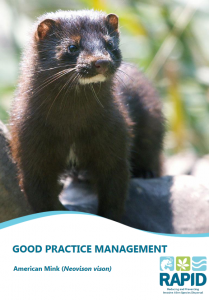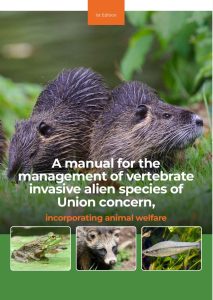Resources
Identification guides and species information
View identification guides for many invasive species from: Identification guides – Invasives.ie
Access referenced species profile accounts with interactive distribution maps by using the ‘Search for a non-native species’ search box widget on this website or go directly to the Species Profile Browser · Species Profile (biodiversityireland.ie)
Additional identification and information resources on Invasive Alien Species of Union concern available from the European Commission:
- EU brochure on the 66 EU Invasive Alien Species of Union concern species: EU_IAS-UnionConcern-Brochure_V2-2020.en
- An updated brochure with all on all 88 Invasive Alien Species of Union concern is available to download just under the heading ‘Consolidated List of Invasive Alien Species of Union concern’ in the European Commission’s Invasive Alien Species Regulation website
- Identification of invasive alien species of Union concern in the field (2020) covering: Coypu, Parrot’s feather, Broadleaf watermilfoil, Muskrat, Spinycheek crayfish, Virile crayfish, American signal crayfish, Red swamp and, Marbled crayfish
- Identification of IAS of Union concern in the framework of a surveillance system (2017) covering: Myocastor coypus; Ondatra zibethicus; – Similar species; Myriophyllum aquaticum; Myriophyllum heterophyllum; Orconectes limosus; Orconectes virilis; Pacifastacus leniusculus; Procambarus clarkii; Procambarus fallax f. virginalis
- Support for customs on the identification of IAS of Union concern (2016) covering: Gunnera tinctoria; Alternanthera philoxeroides; Procambarus fallax f. virginalis; Tamias sibiricus; Callosciurus erythraeus
- Support for customs on the identification of IAS of Union concern (2017) covering: Myriophyllum aquaticum; Myriophyllum heterophyllum; Pennisetum setaceum; Orconectes limosus; Sciurus carolinensis
- Support for customs and/or surveillance on the identification of IAS of Union concern (2019) covering: Acridotheres tristis; Arthurdendyus triangulatus; Gymnocoronis spilanthoides; Salvinia molesta; Acacia saligna
- Guide 2: Identification of invasive alien species of Union concern during customs controls (2020) covering: alligator weed (Alternanthera philoxeroides); Pallas’s squirrel (Callosciurus erythraeus); Chilean rhubarb (Gunnera tinctoria); parrot’s feather (Myriophyllum aquaticum); broadleaf watermilfoil (Myriophyllum heterophyllum); spinycheek crayfish (Orconectes limosus); fountain grass (Pennisteum setaceum); marbled crayfish (Procambarus fallax f. virginalis); grey squirrel (Sciurus carolinensis); Siberian chipmunk (Tamias sibiricus)
- Purse, B. V., et al., (2020) The role of invasive alien species in the emergence and spread of zoonoses. Technical note prepared by IUCN for the European Commission.
Control and management
Caution! – these guidance documents may not refer to nor take into account Irish authorizations or regulations or any up-dates of them. These documents will guide you in management approach but be mindful to have site specific plans and to ensure compliance with Irish law. Check with your local authority if on-site disposal authorizations are needed. If you are removing an invasive species from a site, you will need to first apply to the National Parks and Wildlife Service for a licence to do so (Regulation 49 of S.I. 477).
RAPID (Reducing and Preventing IAS Dispersal) LIFE project – Good Practice Management guidance documents:
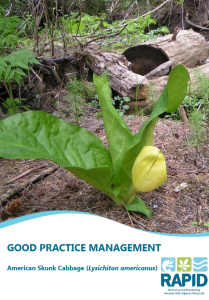
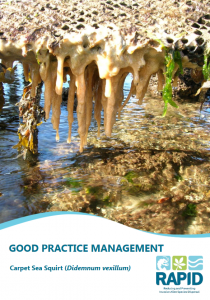
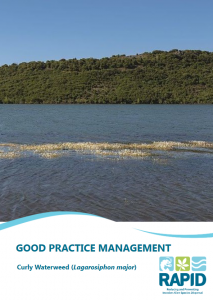
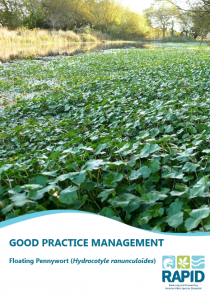

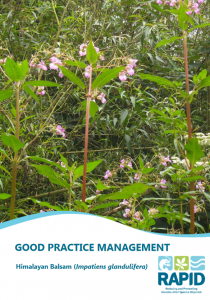
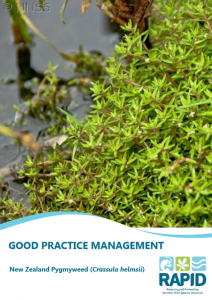
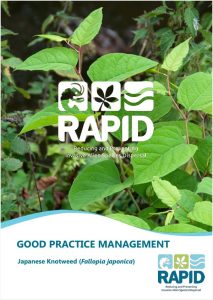
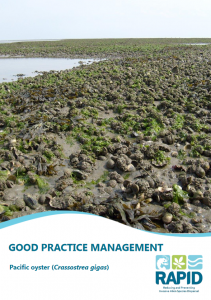
The Property Care Association offer invasive species guidance, which includes the following documents on Japanese knotweed;
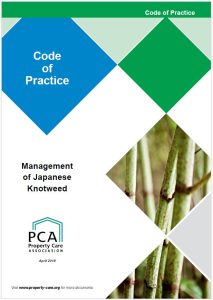

Transport Infrastructure Ireland have published these documents on management of invasive aliens plants on National Roads:
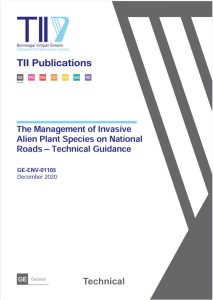
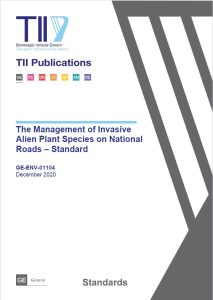
Smith, et al. (2022). A manual for the management of vertebrate invasive alien species of Union concern, incorporating animal welfare. 1st Edition. Technical report prepared for the European Commission
The National Biodiversity Data Centre does not undertake practical control on the ground nor are we an advisory body on control. However, these details and resource links may help guide your actions.
Signage
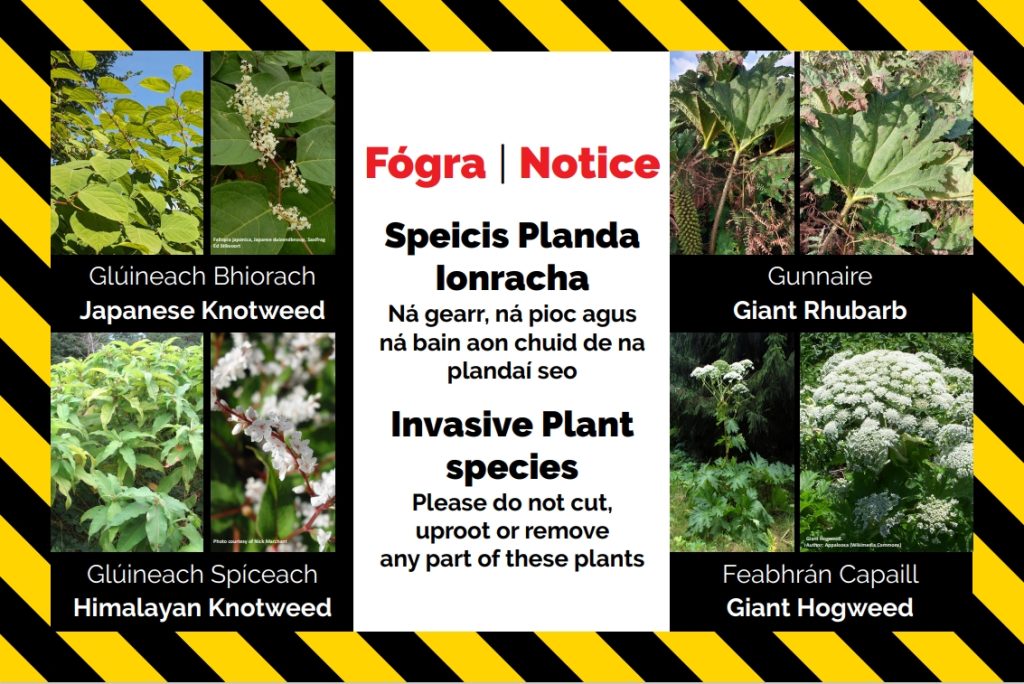
Invasive Species Ireland – Invasive Species Action Plans (ISAPs)
The below Invasive Species Action Plans were developed under the Invasive Species Ireland initiative. The overall aim of the plans is to put in place mechanisms to prevent introduction or new introductions of the species to Ireland, and, to set out actions required for successful implementation and guidance on methods for eradication/control of the target invasive species in Ireland.
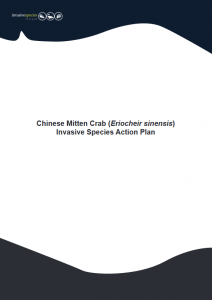
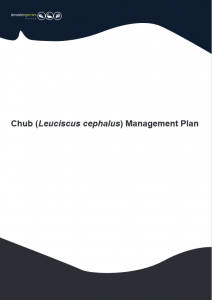
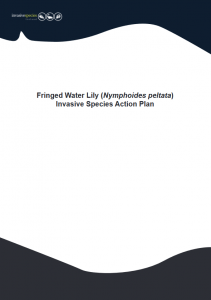
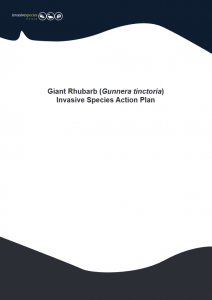
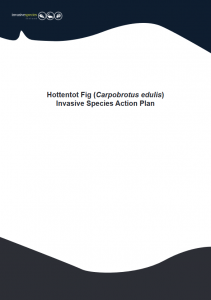
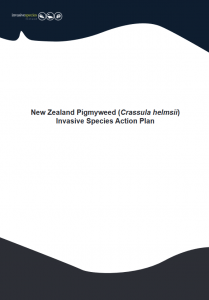
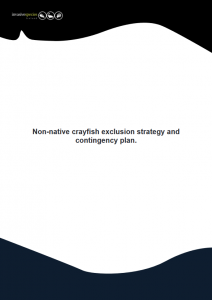
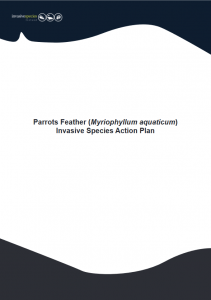
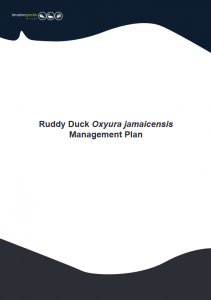
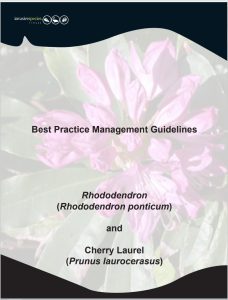
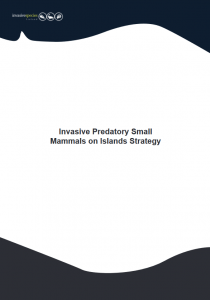
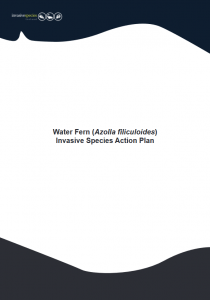
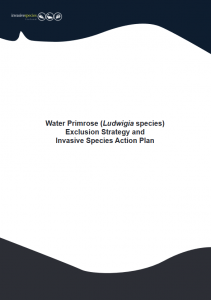
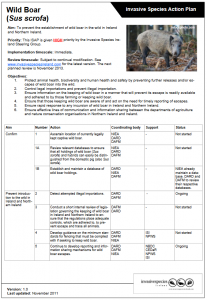
Videos
Playlist of invasive species videos is available from the National Biodiversity Data Centre’s YouTube Chanel: Invasive Alien Species – YouTube
Check Clean Dry biosecurity campaign resources
https://invasives.ie/check-clean-dry-resources
Links
In Ireland
Inland Fisheries Ireland: www.fisheriesireland.ie
National Parks and Wildlife Service: www.npws.ie
Waterways Ireland: www.waterwaysireland.org/biodiversity-on-irelands-waterways
Leave No Trace: www.leavenotraceireland.org
In the United Kingdom
Invasive Species Northern Ireland: https://invasivespeciesni.co.uk
GB Non-native Species Secretariat: www.nonnativespecies.org
European IAS Networks and information databases
NOBANIS – European Network on Invasive Alien Species
EASIN -European Alien Species Information Network
http://easin.jrc.ec.europa.eu/
DAISIE – Delivering Alien Invasive Species Inventories for Europe
AquaNIS – European marine alien species database
http://www.corpi.ku.lt/databases/index.php/aquanis/
International IAS Networks
GISID – Global Invasive Species Database
GISIN – Global Invasive Species Information Network
ISSG – Invasive Species Specialist Group
CABI – Invasive Species Compendium
Online journals (open access)
Aquatic Invasions – www.aquaticinvasions.net
BioInvasions records – www.reabic.net/journals/bir/Default.aspx
Management of Biological Invasions – www.reabic.net/journals/mbi/Default.aspx


